
Do you have a question about the Lennox XC13-024-230-01 and is the answer not in the manual?
| Model Number | XC13-024-230-01 |
|---|---|
| Category | Air Conditioner |
| Voltage | 230V |
| Refrigerant | R-410A |
| Sound Level (Outdoor Unit) | 74 dB |
| Phase | 1 |
| Cooling Capacity | 24000 BTU |
| Compressor Type | Single Stage |
Lists recommended torque values for various fasteners.
Details requirements for using manifold gauge sets with HFC-410A.
Explains the use of liquid and vapor line service valves.
Details how to operate the angle type service valve.
Details how to operate the ball type service valve.
Explains how to access and seal service ports.
Step to disconnect all power to the outdoor unit.
Connects gauge set, recovery cylinder, and machine.
Details methods for removing HCFC-22 refrigerant.
Discusses sound ordinances and window placement.
Instructions for placing the unit on a grade-level slab.
Guidance on raising the unit using support feet extenders.
Warns about oil damage to rubber roofing materials.
Steps for removing louvered panels from the unit.
Steps for installing louvered panels onto the unit.
Provides information on installing or replacing refrigerant line sets.
Details line set sizes and recommendations by model number.
Illustrates methods for isolating line sets transitioning vertically to horizontally.
Shows proper installation techniques for vertical refrigerant line runs.
Illustrates methods for isolating horizontal refrigerant line runs.
Covers safety warnings and alloy recommendations for brazing.
Covers cutting, core removal, and manifold gauge set connection.
Details nitrogen flow and protecting components during brazing.
Protecting service valves with wet cloths and cooling the joint.
The core procedure for brazing the refrigerant line set.
Details procedures for flushing fixed orifice or expansion valve systems.
How to connect equipment for the flushing procedure.
Steps for flushing the line set and indoor unit coil.
Steps for installing an indoor expansion valve.
How to properly position and install the sensing bulb.
Procedure for connecting the equalizer line.
EPA regulations and POE oil compatibility warnings.
Step-by-step procedure for performing a leak test.
How to connect the gauge set and vacuum pump.
Procedure for evacuating the system to the required micron level.
Guidance on selecting and installing disconnect switches.
Recommendations for thermostat installation location.
Wiring instructions for low voltage control connections.
Procedure for performing a system leak check.
Procedure for evacuating the system.
Using nitrogen to break vacuum and replace filter drier.
Importance of energizing the crankcase heater before start-up.
Checks for fan binding, wiring, voltage, and disconnects.
Procedures for connecting gauges, checking airflow, and adding refrigerant.
Conditions and requirements for charging the system.
Determining charge method based on metering device and temperature.
Using the Delta-T chart to check indoor airflow.
How to adjust fan speed based on airflow checks.
Formula for calculating total refrigerant charge.
Table for adjusting charge based on line set length.
Steps to calculate and compare approach values for TXV systems.
Steps to calculate and compare subcooling values for TXV systems.
Steps to calculate and compare superheat values for fixed orifice systems.
Function and operation of the high pressure switch.
Function of the discharge line temperature protection switch.
Function of the compressor casing temperature protection switch.
Function of the crankcase heater thermostat.
Tasks for dealers to perform on the outdoor unit.
Tasks for dealers to perform on the indoor unit.
Maintenance tasks homeowners can perform.
Specific cleaning and inspection requirements for the outdoor coil.
Pre-checks before calling for service if the system fails.
List of related publications for more information.
List of checks for proper installation and operation.





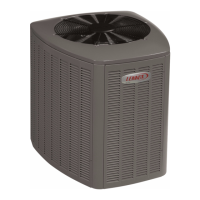
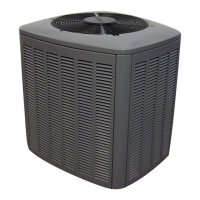
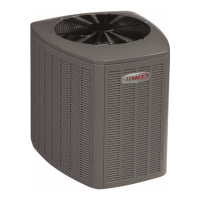
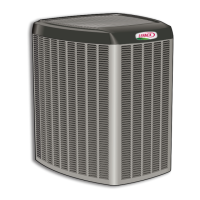

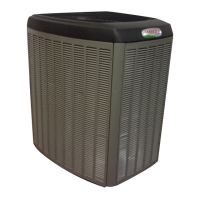
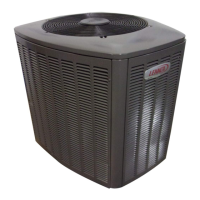
